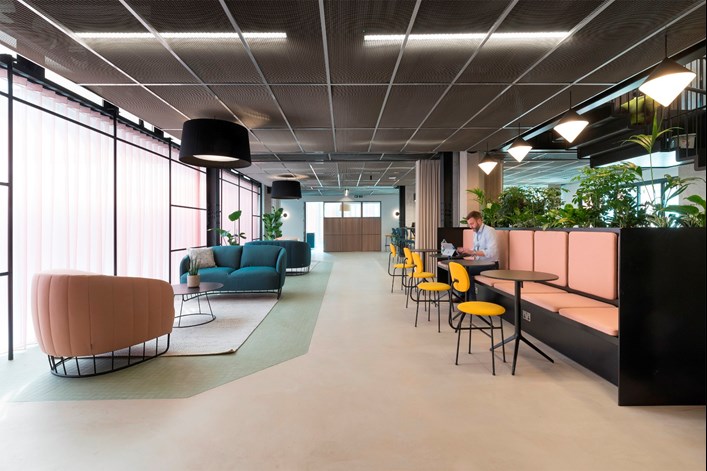21 August 2020

Ryan Cleanthi, Project Director
Refurbishment of buildings for co-working required two key components. COVID-19 has just created a third.
We believe that co-working will encourage a desire to return to the office. This office may not be your original one but coming soon to a place near you... expect co-working to be instrumental in generating new enthusiasm for getting back to workspaces.
Refurbishing for co-working is complex. As it is multi-tenanted and speculative the designing of the space evolves throughout the delivery programme. Anticipating what might work for who and how many requires collaboration and forward thinking. Amongst these factors for consideration were two key components that, when delivered properly, were fundamental to creating a successful co-working space. With COVID-19 comes a third. What we were discussing with our clients in January changed dramatically in April.
Rather than bemoaning the demise of the co-working sector that was speculated early on, bold design teams and forward-thinking clients have approached challenge with great innovation. COVID-19 will change co-working but the outcome is positive.
The now three fundamental factors to refurbishing a building for co-working are:
Choose the right building
The efficiencies in older buildings can be difficult to refurbish but when done well offer many benefits; the opportunity to create a modern environment in a heritage-building, a reassurance the building will be robust, and knowledge the most sustainable option has been chosen. But the building needs to be of a type that offers functionality and flexibility on a significant scale and caters for a multi-tenanted audience.
Buildings that can be easily segregated offer individual spaces where services such as acoustics and temperature are independent from the rest of the floor. This independence is vital for co-working and extends across services, design and materials. Operators understand tenants often want brand-aligned offices and so develop spaces to meet these requirements and allow for their own modifications. In some cases this means creating dedicated entrances and front of house for specific tenants.
The key is balancing the finances of turning an older building into one that is state-of-the-art; how much money needs to be invested to achieve the modern expected functionality? By understanding the buildings that are easily adaptable and how to do it will save disappointment in the long-term.
Aftercare is key
After a traditional workplace fit out, 100% of employees will use the building from day one or at least within the first month. Repeated use of a space and its amenities by the same people will quickly identify problems to be rectified. Do not underestimate the ease of designing for the same workforce who engage in this repeated use after reading their employee manual.
The co-working model that caters for a more transient workforce can often expect up to 25% maximum occupancy on day one. Consistent aftercare is key as occupancy takes time to increase to maximum capacity. Elements as simple as signage and visible instructions for the dishwasher, for example, requires a solution that balances aesthetic design with clarity of communication. A growing, irregular and changing workforce that does not use the space daily will often have to relearn simple instructions. Aftercare needs to be ongoing for far longer.

COVID-19 has generated more innovation
What is a co-working layout when social distancing measures are in place? How can we build smarter to make cleaning and maintenance for hot desking more effective yet keep costs down? These are two of the questions we started to ask in April.
Current solutions such as bottles of hand sanitiser and social distancing signage are temporary fixes to what will be a long-term issue. In response, design teams and clients are turning to technology and innovation and the conversations have switched to ‘touchless.’ COVID-19 has forced us to identify the surfaces and services that we touch daily and explore how sensory technology can be used to minimise and even eradicate the need for physical contact.
How tenants will use and move around space in the future will change and through clever modification at the design and throughout the build stage we may not need to blight a great fit out with ugly post-build signage. The advantage of having one team deliver the whole refurbishment and fit out programme is a holistic view of the process and a shared vision of the end goal from the very beginning.
There has been much speculation about whether people will return to the office. We believe they will, but their environments and how they are used will be different. Our industry is quick to adapt and we’re already starting to make change.











